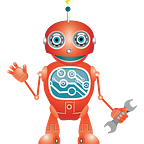The Case for Gamification in Education
Gamification is a bit of a buzz word in education right now.
But, there is also a lot of confusion about whether or not gamification is valuable. And if it is valuable, how do we include it in our classrooms?
To start, gamification and game-based learning are similar, but slightly different. Gamification is using game elements in student learning, while game-based learning is designing activities so that game principles are inherent within the learning itself. Both are a valuable tool.
For those who are apprehensive, gamification does not need to be just playing games. You can add gamification elements to many things you do in the classroom, like leaderboards, badging systems etc. to engage students in their learning and add those gamification elements in many different ways.
Many educators have been using these strategies already without realizing they were using gamification!
Maybe you have heard of the concept of “10,000 hours”. Essentially, this is the idea that if you spend 10,000 hours on something you are an expert.
Well, by the time kids are 21, they will have played over 10,000 hours of video games, which kind of makes them experts at games!
And this is one of the major reasons why gamification is successful for so many students. Kids naturally gravitate towards the aesthetics of games and immediately understand and respect their mechanics and rules.
There are 4 core reasons why people (adults included!) enjoy games:
1 Autonomy. Games allow us to make our own choices, and people like to be in control and have a sense of agency.
2 Competency. Games make us feel good because they allow us to feel that we can overcome challenges.
3 Relationships. Many games foster relationships through competition or cooperation, which we are hardwired for.
4 Instant feedback. You do not need to wait until a week later to find out if you succeeded or failed, you find out instantly if what you are doing is working or if it is not! In games, if the boss beats you, you know you need to try something else!
And interestingly, these 4 qualities are what are often cited as the future of high-quality education!
Personalization of learning and student autonomy is a HUGE part of the future of learning. Our increasingly connected world means students need these important social skills. Games are also feedback oriented, which will become an increasingly important factor in student learning!
Now, a key point…
Games are super engaging, but it is important to keep in mind that while engagement is important, learning being fun is not the same as learning being engaging.
Gamification elements should not be used in the classroom just to have fun while learning (even though it can be fun!)
Gamification needs to serve a bigger purpose.
Gamification is all about identifying “pain points” or where students may get stuck, and using the elements of games to reduce those obstacles. It not just about fun!
For our own context with the STEAM Hub, we had a few pain points to consider.
The first is that students move at different paces, how do we support students different learning paces in an online context?
The second is that STEM learning relies heavily on hands-on experiences, in our in-person programs, we can easily provide that! But in an online environment, we don’t know what types of technology students may have access to.
Finally, many of the classes we offer are on topics that our students have very little (if any) experience with. They may have never seen or heard of 3D printing before, so how do we teach them about 3D printing online?
These three problems could be solved with gamification and game-based learning! By implementing badges, it is easier to monitor student progress and keep tabs on who is keeping up, who is excelling, and who is falling behind so that a teacher can adjust accordingly. To deal with the lack of hands-on experiences, we designed simulations to give students an option to still get hands-on experience. And the games also assist with lack of familiarity to help students test their learning in a relevant and meaningful way.
So, how can I use this information in my own class? Can gamification work for me?
Follow these 4 principles of gamification to assist you in bringing gamification to your students:
- Identify your audience and context: who is the student and what are they learning?
- Identify “pain points” or obstacles to learning: some examples may be focus, skill level, pride, learning environment etc.
- Define the learning objectives: such as specific behavioural, curriculum, or learning goals
- Structure the experience: tracking, rules, feedback etc.
Following these principles will help keep you on track with creating meaningful learning experiences and not just playing games for fun!
Keep in mind that gamification does not require you to have a game development team creating tons of video games for students like we have at STEM Minds. Gamification principles can be used in unplugged activities as well such as structuring learning like quests/missions, using a classic game show structure, or role-playing, you can implement these principles in many creative ways!
So in summary, we believe that gamification is an extremely valuable tool for student learning, not only in an online context like we encounter in STEAM Hub, but in all types of classrooms! We believe that while gamification is a hot topic in education, it is definitely not a passing fad.
The principles of gamification and game-based learning are the future of learning!
Before you go…
We are STEM Minds, a STEM education company helping our students to discover their passions and explore the everything the wonderful world of STEM has to offer. Follow us on our mission to empower the next generation of problem solvers, game changers, and fearless leaders.
